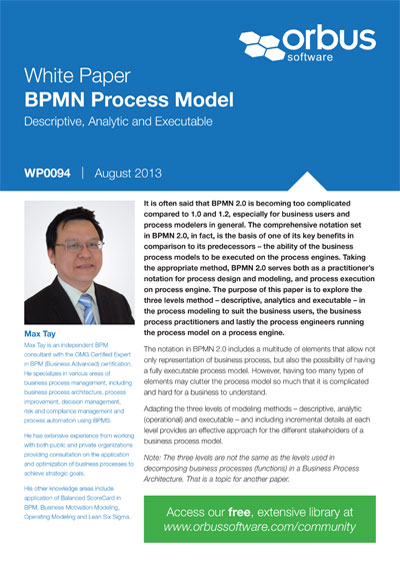A paper exploring the three levels method - descriptive, analytic and executable - in the BPMN Process Model.
It is often said that BPMN 2.0 is becoming too complicated compared to 1.0 and 1.2, especially for business users and process modelers in general. The comprehensive notation set in BPMN 2.0, in fact, is the basis of one of its key benefits in comparison to its predecessors – the ability of the business process models to be executed on the process engines. Taking the appropriate method, BPMN 2.0 serves both as a practitioner’s notation for process design and modeling, and process execution on process engine. The purpose of this paper is to explore the three levels method – descriptive, analytics and executable – in the process modeling to suit the business users, the business process practitioners and lastly the process engineers running the process model on a process engine.
The notation in BPMN 2.0 includes a multitude of elements that allow not only representation of business process, but also the possibility of having a fully executable process model. However, having too many types of elements may clutter the process model so much that it is complicated and hard for a business to understand.
Adapting the three levels of modeling methods – descriptive, analytic (operational) and executable – and including incremental details at each level provides an effective approach for the different stakeholders of a business process model.
Please login to continue reading.
